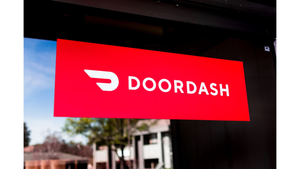SymphonyIRI Report Examines Merchandising Trends
January 1, 2018
In today’s world of economic trouble and conservative purchase behaviors, it is the value proposition that is playing a central role in the enhanced shopping experience. The latest issue of SymphonyIRI Group’s Times & Trends, “Merchandising Trends: Driving Consumption through Shopper Marketing,” examines how merchandising is acting as the platform for communicating that value to customers. “Merchandising is a fantastic tool for educating and informing shoppers,” says Susan Viamari, editor, Times & Trends, SymphonyIRI. “Today’s shoppers are very open to both as they plan and execute their shopping missions. After all, they are looking to CPG marketers to help them live well while staying within their budgets.” After several long years of decline, merchandising, defined as displays, feature ads, feature and display combined and price reduction only, has been thrust back into the spotlight by The Great Recession and economic turmoil. In 2011, 47 percent of CPG categories enjoyed increased merchandising support. While this reflects decelerating growth versus 2010, when 58 percent increased support, trends continue to indicate a highly promotional environment that seeks to drive purchase behavior in a difficult economic environment. Across grocery, drug and mass channels, 53 percent of categories experienced increased lift from merchandising activities during the past year. This is a notable improvement from 2010, when 46 percent saw lift increase. Merchandising performance within the grocery channel is in line with average industry trends, while the share of categories seeing lift within the drug channel lags industry average by 8 points. However, the drug channel’s merchandising focus is on the rise, so lift may accelerate in the coming year. Economy-Driven Rituals Prompt Increased Merchandising Food and beverage categories are well-represented among the ranks of those categories seeing the biggest jump in merchandising support during the past year, reflective of retailer efforts to play to economy-driven rituals around home-based eating and drinking. Another powerful trend marking CPG-related behavior these days is the pre-planning of shopping excursions. Today, three-quarters of consumers are making CPG decisions before entering the retail environment and an equal number enter the store with a shopping list in hand. Despite the high numbers of consumers following these practices, feature and feature/display combined support—tactics which begin to impact the shopper before she enters the retail environment—have each shown decelerating growth trends during the past year. This is an important change and is one to be monitored closely. Merchandising Support Begins at Home Today, 63 percent of consumers look at store circulars before heading to the grocery store. And, 49 percent of categories achieved lift of 100 percent or more from feature-only merchandising efforts during 2011. When backed by display activity, a whopping 84 percent of categories achieved lift of 100 percent or greater during the same time period. Despite these powerful results, feature only and feature/display combined support is much less prevalent versus other, less powerful tactics. For example, 87 percent of categories achieved greater than 10 percent of volume sales with price reduction-only tactics despite the fact that lift of more than 100 percent occurred in only a handful of instances. “Price will continue to have a very high profile in the hearts and minds of consumers in the coming year,” said John McIndoe, senior vice president, Marketing, SymphonyIRI. “As such, price-related strategies—both everyday and promotional—must be honed with surgical precision from this day forward. Pricing strategies must be consumer-centric, enticing consumers to buy, while still allowing achievement of corporate and partner goals.” Manufacturers and retailers seeking to maximize opportunity within the new, emerging retail environment should consider the following action items:
Identify new growth opportunities and threats: Manufacturers must understand price elasticity of demand across categories/brands and leverage that knowledge to develop and refine everyday and promotional pricing strategies; retailers should closely track channel trends and the impact of competitor merchandising efforts on those trends to determine whether/when to adjust their own merchandising-related efforts.
Work with key accounts to develop strategies that address market and store-level shopping patterns and needs: Manufacturers should work with key retailer partners to develop, at the market and/or store level, targeted strategies for their brands that help to contribute to overall category sales growth; retailers should build cross–merchandising/cross-promotional programs that make parallel products easier to locate/access.
Continually measure and monitor pricing and merchandising execution and impact: Manufacturers should monitor store-level merchandising performance and retail execution among key retail partners and adjust mid-path as warranted; retailers should carefully test all pricing and merchandising initiatives at a micro level prior to roll out and then closely monitor impact of roll out.
About the Author
You May Also Like




